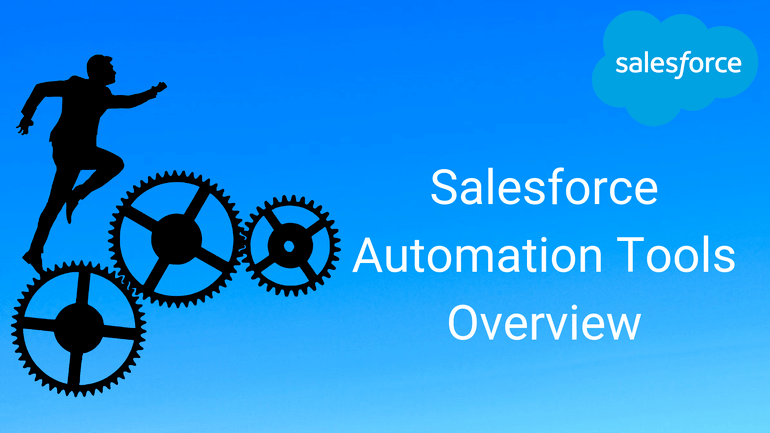
A Salesforce implementation can help migrate all your customer, sales and interactions data into one place and standardize business processes. This allows all sales staff to operate the same way, allows the pipeline of sales opportunities to be reported accurately and if products and price books are implemented, allows for standardized quoting and product pricing.
Once these basics are in place, users are trained and the system is well bedded down, it’s time to apply some automation to help improve productivity, ensure consistency and make the customer experience more personalized and efficient.
A previous article discussed benefits of Salesforce automation with Chatter, but there are more standard Salesforce tools that can be used to help with this automation. The three tools listed below don’t need a software developer to use; an experienced Salesforce Administrator or Salesforce Consultant will be quite capable of configuring these to meet your automation requirements.
While the capabilities of some of these tools overlap, each has their own specialties.
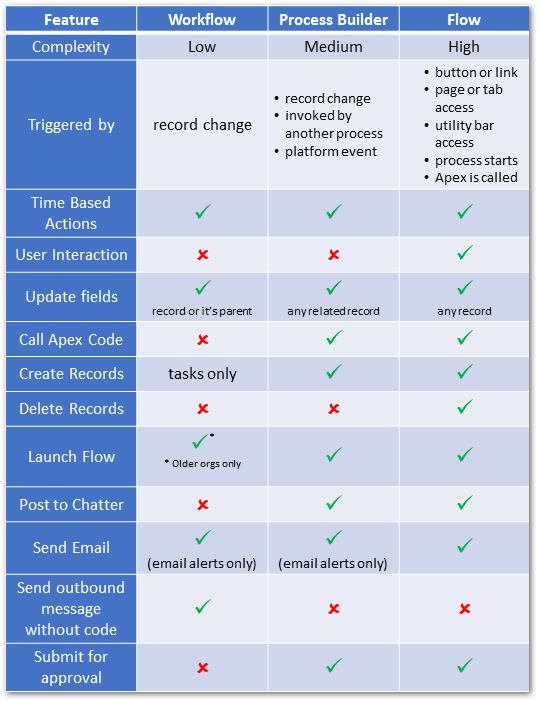
Workflow Rules
When the automation required is a relatively simple case like performing an action when a record is updated, a workflow is the easiest to configure. A single if/then statement can be triggered when a record is changed and the workflow can create a task, send an email alert, or send an outbound message to an external system without needing to write any code.
Limitations: Cannot post messages to chatter, can only update the current or a parent record and cannot submit for approvals or delete records.
Overall complexity: Low
The workflow example shown below sends an email to a manager alerting them to a sales opportunity that has reached the “Value Proposition” stage, alerting the manager that the team member may need help to develop this proposition for the customer.
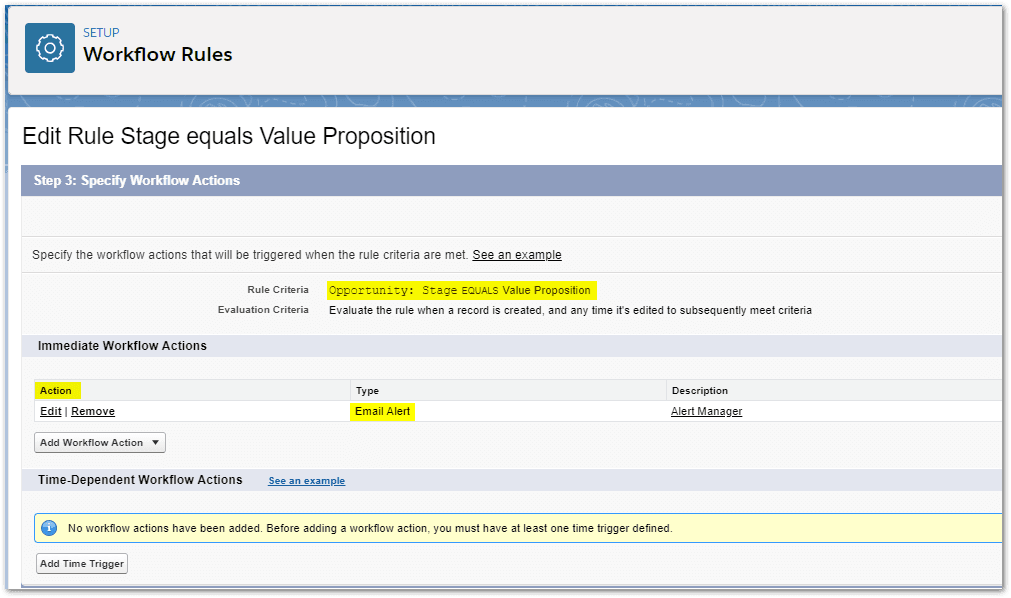
Salesforce Process Builder
Process Builder includes almost all the functionality of workflows and much, much more. It can include multiple if/then statements, allowing it to perform in a single process what would take multiple workflows. Process Builder is suitable for almost any automation task that does not require user interaction or the deletion of records. Being the newest of the Salesforce automation tools, it is continually updated with new functionality.
The Salesforce Process Builder can be triggered when a record is created or changed, can be triggered by another process or when a platform event occurs. It can create new records, new tasks, send email alerts, post messages to chatter, submit records for approval, update any related records and call Apex code.
Limitations: Cannot send outbound messages without writing code and cannot delete records.
Overall complexity: Medium.
This example process shown below performs a number of actions for a sales opportunity depending on whether the deal is won, lost, or requires a quote to be prepared for the customer. If the deal is won a contract is automatically created, a chatter post is sent to a sales manager, an email is sent to the VP of sales and 6 days later a task is scheduled for a follow up call to the customer. If the deal is lost and is of a high value, a chatter message is sent to the VP of sales so they can follow up. Finally, if a quote is requested by the customer, a reminder task is created to remind the sales person to follow up 3 days after the quote is sent.
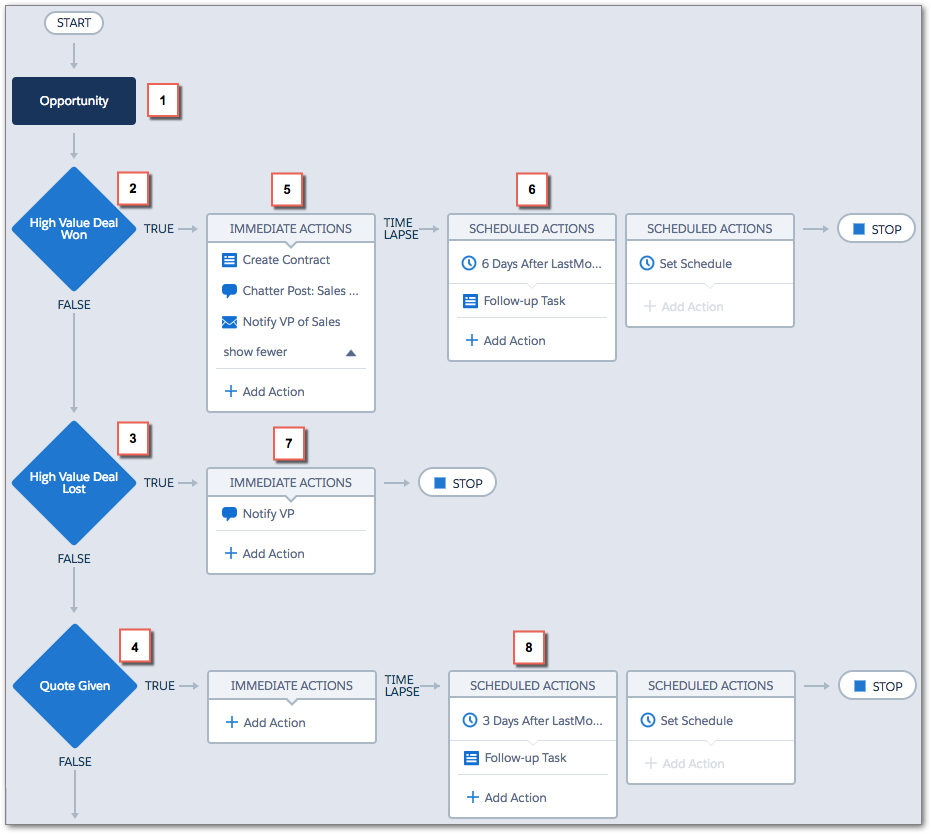
Cloud Flow Designer
Commonly just known as “Flow”, the Cloud Flow Designer supports nearly all the same functions as Process Builder but with several additional functions.
- they can be used to build interactive workflows that request data input from the user,
- they can operate on a number of records at once (for example all open opportunities for a customer) ,
- they can be used to delete records.
Flow is particularly well suited to complex automation tasks that require user input and multiple levels of branching logic. If the first condition the user enters is true then a second condition can be tested before performing the desired action. Unlike workflows and Process Builder, Flows are triggered by a user clicking on a button or a link to start the automation.
Building a wizard to perform a complex set of actions for a user is a typical use case for flow.
Overall complexity: High.
The example flow shown below provides a simple form to lookup a lead record and create a new lead if it does not exist. It then runs a mortgage calculator to gather some inputs, calculates a quote and displays the result on the screen. This is the type of function that flow is designed for, gathering some input, performing some record lookup or calculations and producing a result.
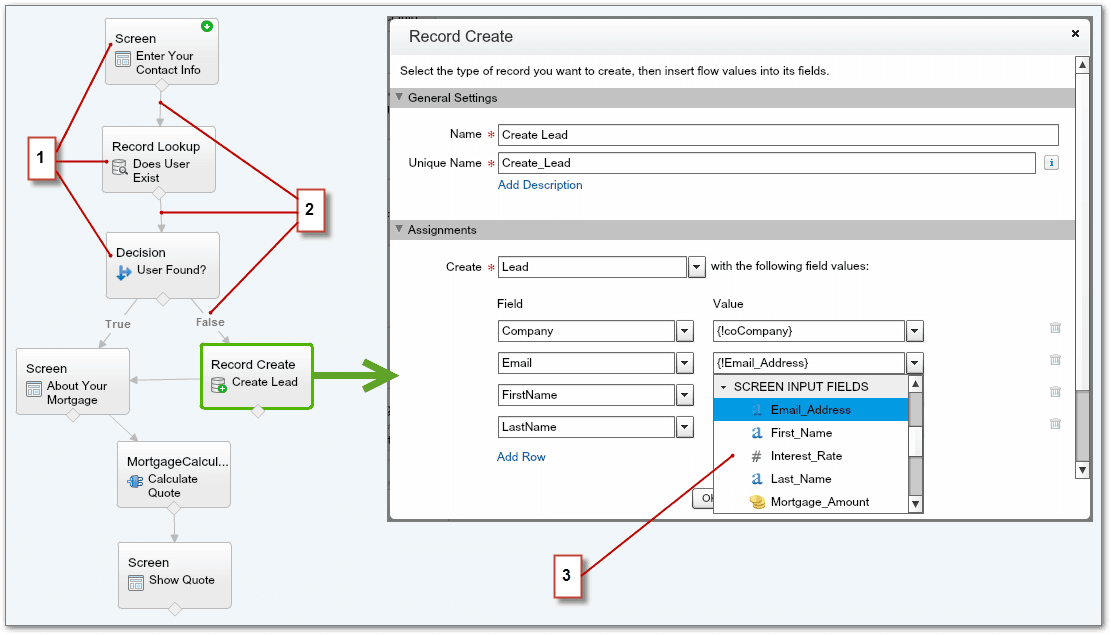
In the following articles, we will cover Salesforce Automation with Workflow Rules, Automation with Process Builder, and Flows in more detail, with sample use cases showing how each tool can be used to automate processes. You can also read recent articles on Salesforce Flow here and here.
Selecting the right Salesforce automation tool can be challenging, but the good news is that more and more can be accomplished with clicks and not code. If you would like help to identify the right Salesforce automation tool for your requirements don’t hesitate to contact a leading Boston Salesforce Consulting Partner at hello@keynodesolutions.com or (858) 215-5371. We’ll be delighted to help you!
Free Salesforce Implementation Assessment
It takes a few minutes and gives you immediate results.
Use this proven tool to find out how Salesforce platform can increase your revenue.
 KeyNode Solutions is a full-service Salesforce Consulting Partner company. We deliver the ultimate Salesforce solutions to grow your business: implementation, integration, customization, and development. Our best-in-class Salesforce managed services for ongoing support available nationwide.
KeyNode Solutions is a full-service Salesforce Consulting Partner company. We deliver the ultimate Salesforce solutions to grow your business: implementation, integration, customization, and development. Our best-in-class Salesforce managed services for ongoing support available nationwide.



